Match the shape of molecules in Column I with the type of hybridisation in Column II.
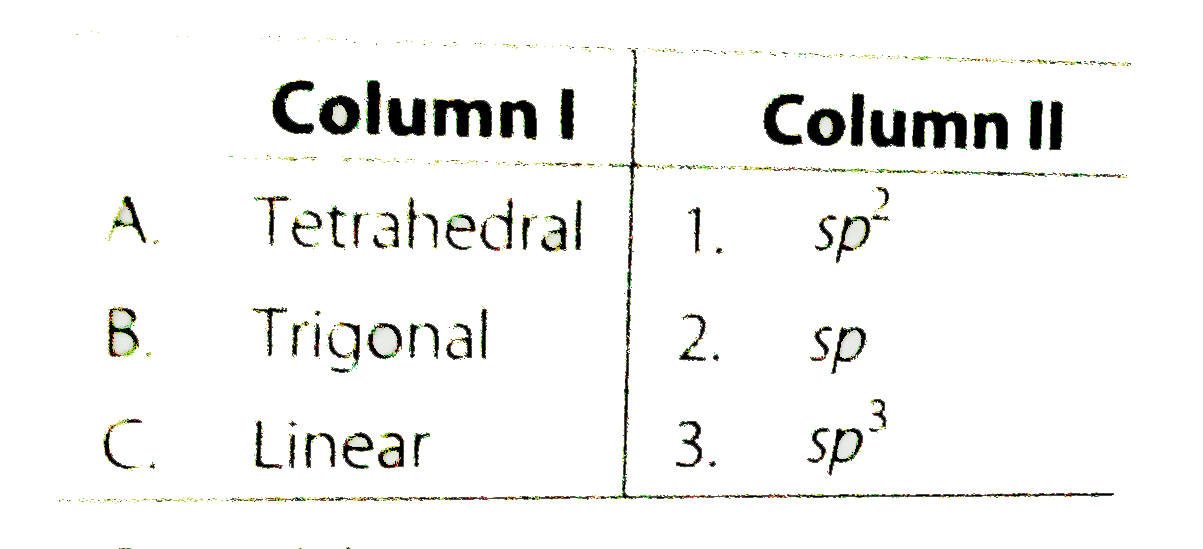
(A-3), (B-1), (C-2)
A) Tetrahedral shape hybridisation.
B) Trigonal shape - hybridisation.
C) Linear shape - sp hybridisation.
Topper's Solved these Questions
- BOOK - NCERT EXEMPLAR ENGLISHCHAPTER - CHEMICAL BONDING AND MOLECULAR STRUCTUREEXERCISE - Assertions and Reasons3videos
CHEMICAL BONDING AND MOLECULAR STRUCTURE
- BOOK - NCERT EXEMPLAR ENGLISHCHAPTER - CHEMICAL BONDING AND MOLECULAR STRUCTUREEXERCISE - Long Answer type questions9videos
CHEMICAL BONDING AND MOLECULAR STRUCTURE
- BOOK - NCERT EXEMPLAR ENGLISHCHAPTER - CHEMICAL BONDING AND MOLECULAR STRUCTUREEXERCISE - Short answer types questions21videos
CHEMICAL BONDING AND MOLECULAR STRUCTURE
- BOOK - NCERT EXEMPLAR ENGLISHCHAPTER - CLASSIFICATION OF ELEMENTS AND PERIODICITY IN PROPERTIES.EXERCISE - Long answer types question7videos
CLASSIFICATION OF ELEMENTS AND PERIODICITY IN PROPERTIES.
Similar Questions
Match the shape of molecules in Column 1 with the type of hybridisation in Column II.
Column IColumn II(a)Tetrahedral(i)sp2(b)Trigonal(ii)sp(c)Linear(iii)sp3(d)Trigonal bipyramidal(iv)sp3dView SolutionMatch the species in Column I with the type of hybrid orbitals in Column II.
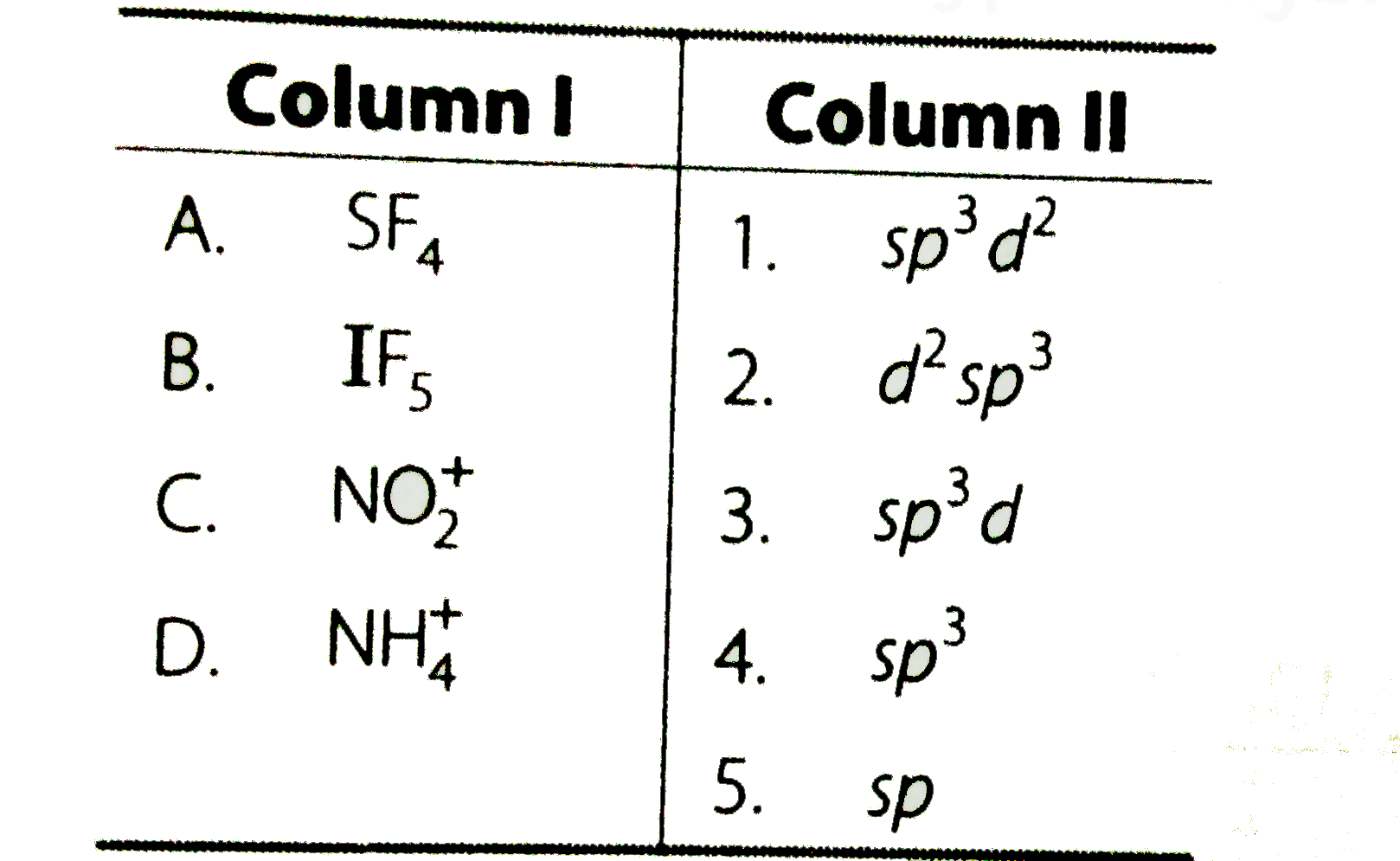 View Solution
View SolutionMatch the reactions given in Column I with the type of reactions given in Column II
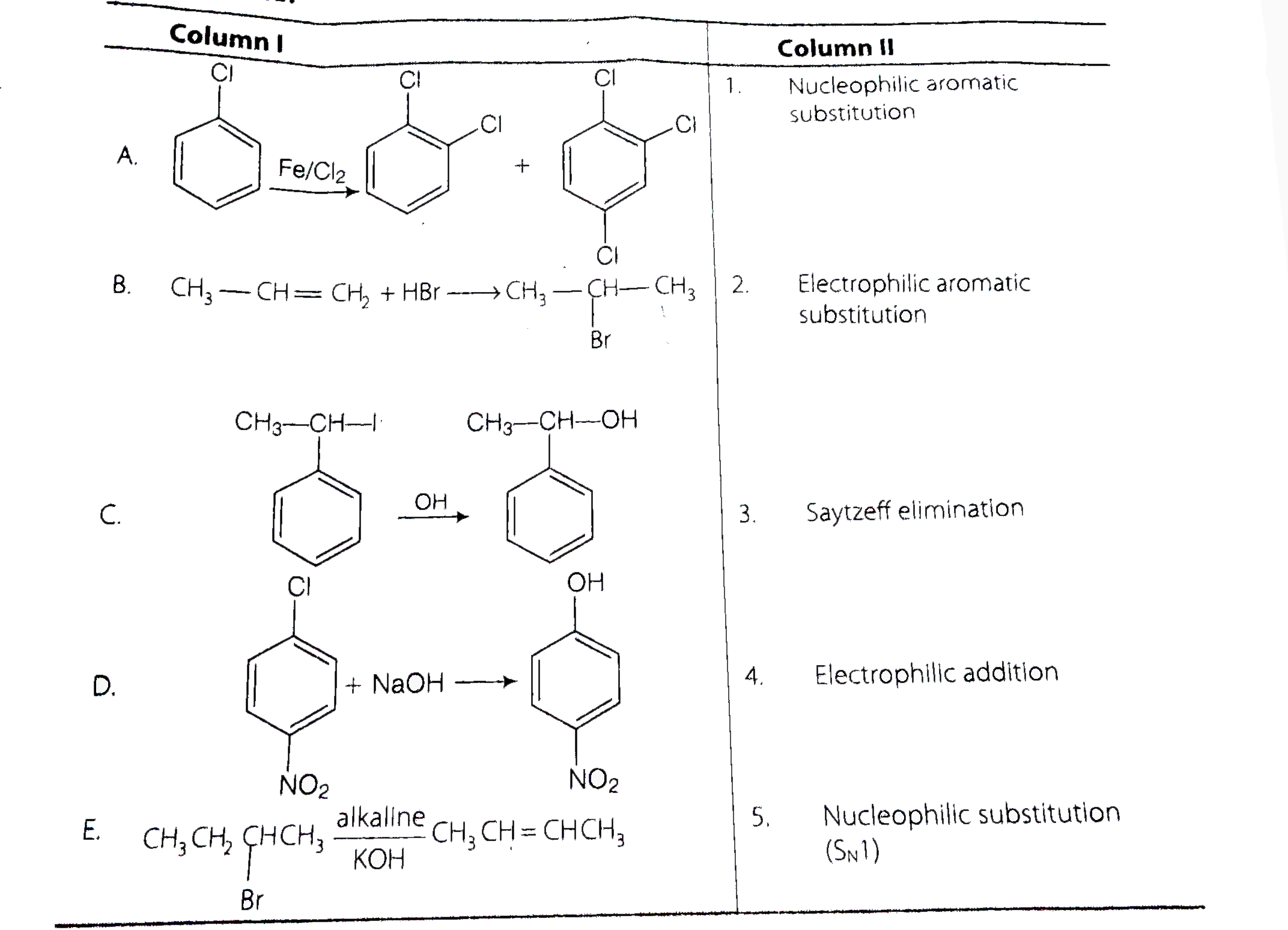 View Solution
View SolutionMatch the compounds given in Column I with the hybridisation and shape given in Column II and mark the correct option.
 View Solution
View SolutionMatch the complexes in Column-I with characteristic(s)/ type of hybridisation listed in column-II
 View Solution
View SolutionMatch the species in Column I with the geometry/shape in Column II.
 View Solution
View SolutionMatch structures given in Column I with the type of detergents given in Column II.
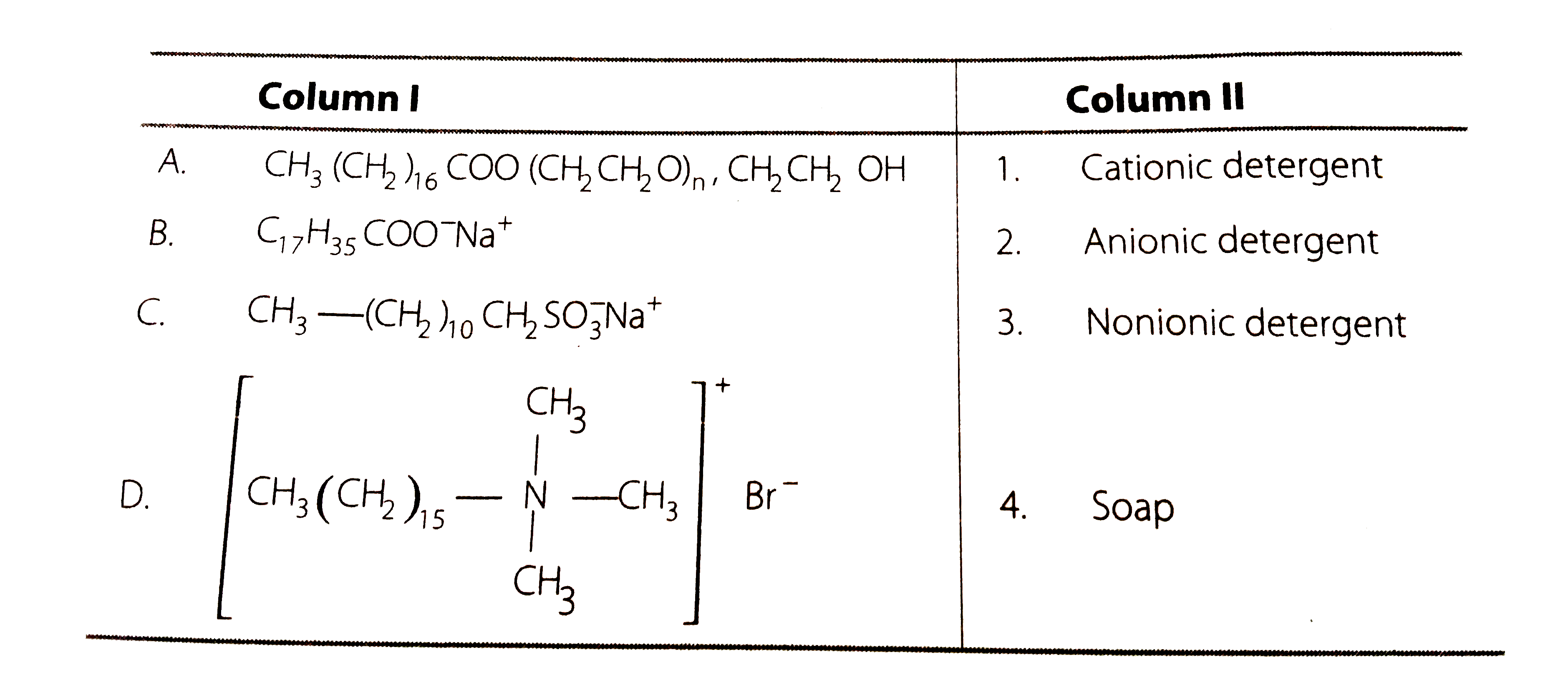 View Solution
View SolutionMatch the molecules given in column I with their shapes given in column II and mark the appropriate choice.
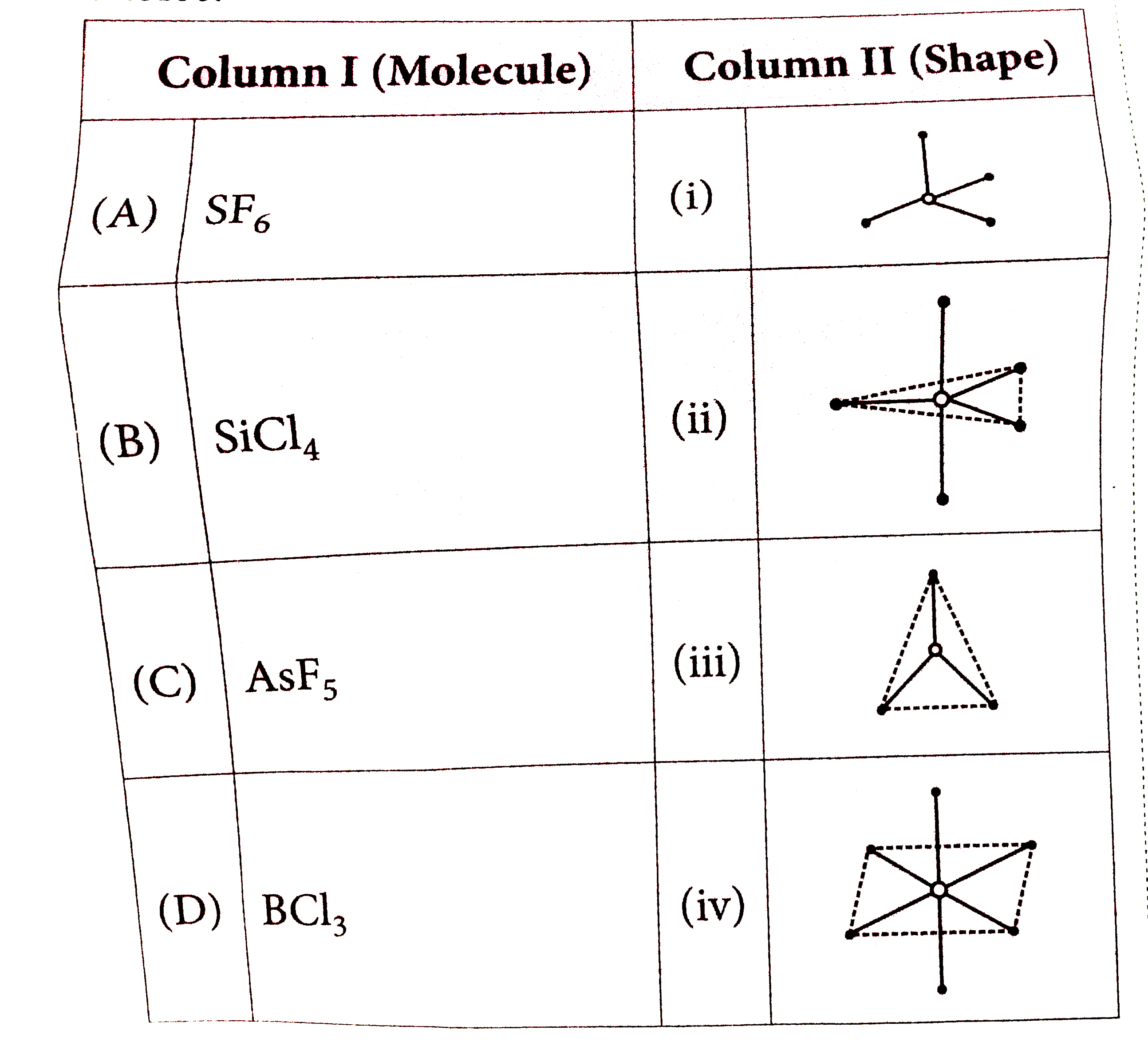 View Solution
View Solutionmatch the types of defect given in column I with the statement given in column II.
 View Solution
View Solutionmatch the types of defect given in column I with the statement given in column II.
 View Solution
View Solution

